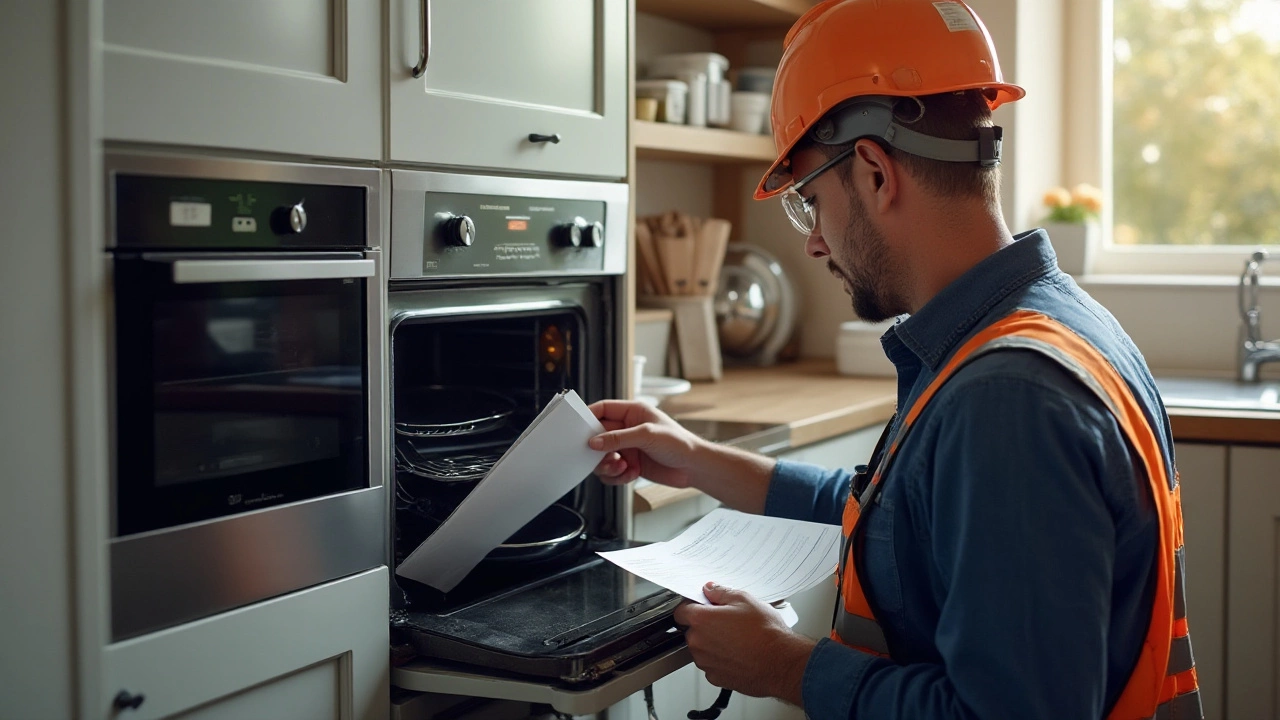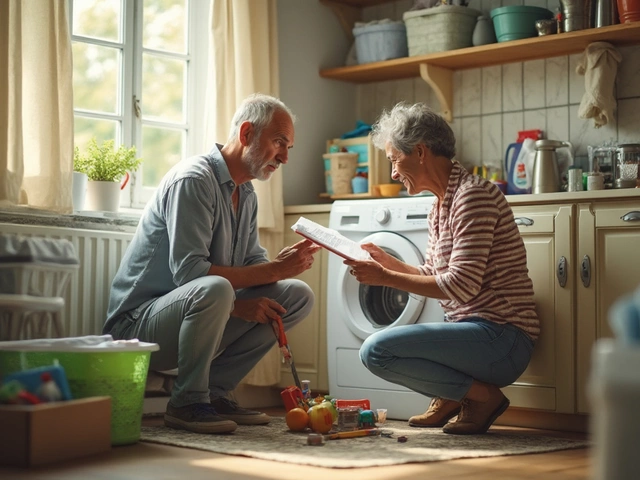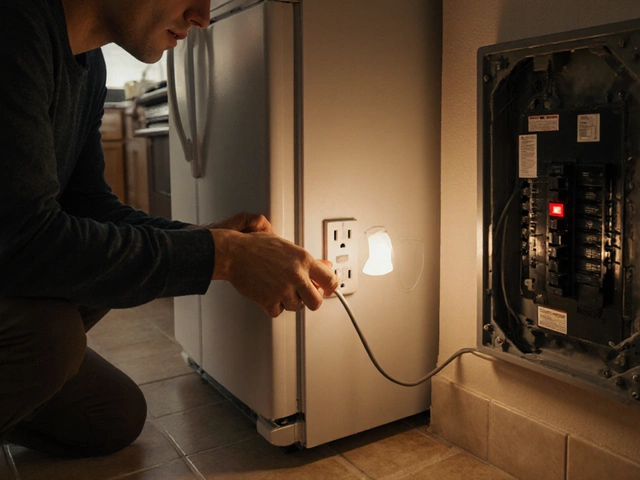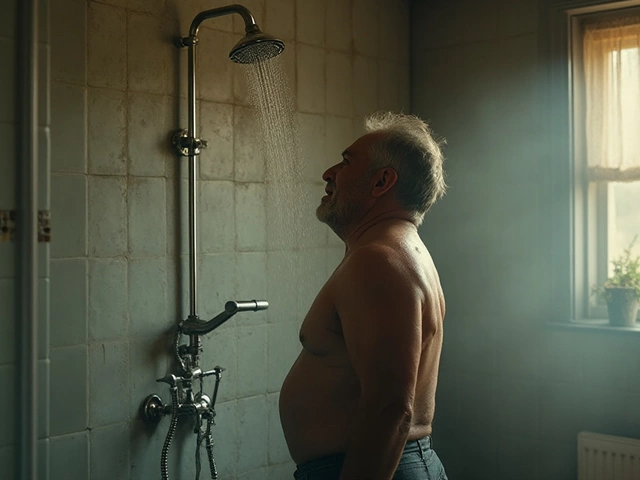Upgrading to a new electric oven can bring a breath of fresh air to your kitchen. But before you get too carried away with recipes and dinner parties, there's the important task of installation to consider. It's not as simple as just plugging it in!
Electric ovens require a significant amount of power, often needing specific wiring and breaker settings. This is not just for performance; it ensures safety, too. Jumping right in without preparation can lead to complications, such as damaging the oven or electrical hazards.
To help you navigate this process, let's dive into the key aspects of installing a new electric oven, providing you with a clear path to a successful kitchen upgrade.
- Assessing Power Requirements
- Safety Precautions
- Dealing with Complications
- Maintenance and Usage Tips
Assessing Power Requirements
When considering the installation of a new electric oven, understanding its power requirements is crucial. Electric ovens are power-hungry beasts compared to many other kitchen appliances, demanding much higher electrical resources to function effectively. Before you even unpack your new oven, the very first step involves determining whether your existing electrical setup can accommodate its requirements. This often requires taking a detailed look at the voltage and amperage needs, which can typically be found in the oven's manual or on the manufacturer's website. Most electric ovens in residential settings operate on 220 to 240 volts, necessitating a designated circuit to accommodate their power demands and ensure safety. Modern homes might already meet these standards, but older constructions could require additional electrical upgrades.
It's essential to determine the circuit breaker size dedicated to your kitchen appliances. Generally, you will need a breaker rated between 30 to 50 amps; anything less might lead to frequent tripping, which not only disrupts cooking but also poses safety risks. Identifying these specifications might be a challenge without the proper tools or experience; hence, it's often recommended to engage the expertise of a certified electrician. According to the Australian Government's Electrical Safety Authority, "Hiring a professional not only guarantees a proper assessment but also ensures compliance with all local safety codes and regulations."
Another aspect to consider is the wiring gauge. Because electric ovens draw significant power, the wiring must be robust enough to carry the load safely. Typically, ovens in Australia would require a minimum of 6mm² wiring. Skipping on this could lead not only to poor performance but also significant safety hazards, such as overheating or electrical fires. To illustrate the point, consider a typical installation where a 240-volt oven with a 40-amp draw would necessitate a 6mm² wiring supply.
It's beneficial to create a checklist before proceeding with the installation. This checklist might include confirming the voltage requirements, verifying circuit breaker capacity, and ensuring appropriate wiring. Apart from these technicalities, verifying the plug type is just as significant; many ovens come with hardwired connections, which demand more than just a plug-and-play capability. If your setup isn't compatible right out the box, you should factor in potential delays and expenses associated with modifying your electrical infrastructure.
Once these are sorted out, consider the location of your power outlet in relation to where you plan to situate the oven. Is the cabling appropriately routed, and are there any other obstructions that could hinder the functionality of the oven? It's easy to overlook these logistical issues, but they can impact both performance and safety. Considering all of these requirements may seem daunting, but doing your homework before that shiny new kitchen upgrade arrives can save you a world of headaches later.
Most importantly, remember that while you can do some preliminary checks yourself, safe electrical work is not only preferable but often necessary when dealing with high-demand appliances. The result of rushing into an installation without proper assessments can lead to re-work, at best, or hazardous situations, at worst. Take the time to do it right, and you’ll be repaid with years of culinary delight without disruptions.
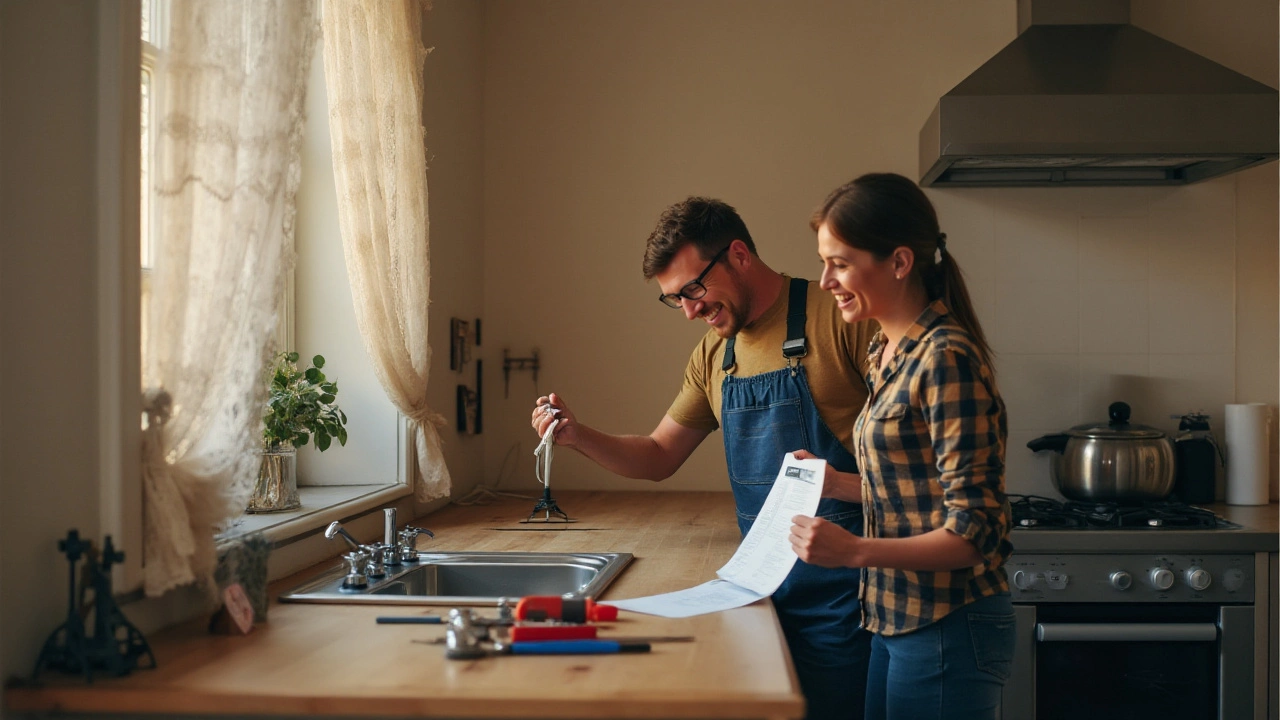
Safety Precautions
When it comes to installing an electric oven, safety should always be your priority. Improper installation can pose serious risks, including electrical shock and potential fires. Before you begin, ensure that the power supply to the existing oven is completely turned off. This simple step can prevent accidents and keeps everyone safe. Always verify using a circuit tester to ensure the power is indeed off. This double-checking step is crucial because remnants of electricity might still be present, even if the oven seems off.
Research suggests that an average home fire caused by electrical appliances accounts for around 51,000 incidents annually in the United States alone. Electric ovens are robust machines, requiring a dedicated power circuit. It's important to consult your home’s electrical panel and find the appropriate circuit breaker dedicated solely to the oven. According to Marcus Pollard, a professional electrician interviewed by 'Home Safe Magazine', "Installing an oven needs isolation from other kitchen appliances on the circuit, as it prevents overloading and enhances the lifespan of your appliance." This highlights the importance of checking your wiring system thoroughly.
Before plugging in your home appliance, inspect the plug and cord for any visible damage. A frayed or exposed wire could easily lead to dangerous incidents. Also, ensure that the plug fits snugly into the outlet; any loose connections can cause sparking. If you notice any signs of damage, consider replacing these components immediately. Using the wrong plug type can affect your appliance’s function and cause potential shocks. Therefore, having the right outlets and ensuring they're in good condition is pivotal for seamless electric oven installation.
Consider also the ventilation and positioning of your oven. It might be a good idea to leave a minimum of 5 cm of space between the oven and walls to allow proper air circulation. This prevents heat accumulation and overheating, which is crucial for the longevity of your kitchen upgrade. Ventilation gaps are not just for heat escape; they allow any harmful gases or fumes, like carbon monoxide, to dissipate effectively. Failing to adhere to these precautions isn’t just about maintenance—it’s about preventing harmful buildup.
If you are making replacements, dispose of the old oven responsibly. Storing old ovens could lead to unwanted accidents, especially if children are around. Certified technicians can handle disposals safely, ensuring minimal risk. Finally, remember to wear appropriate safety gear. Insulated gloves are especially useful when handling electrical components. Safety goggles can protect your eyes from sudden sparks. Such simple measures can make a world of difference. It’s these small but vital layers of protection that ensure you have a smooth and dangerous-free home appliance setup.

Dealing with Complications
When installing a new electric oven, it's not uncommon to encounter a few hurdles along the way. These complications often arise from the specific power requirements of the appliance, or from older home setups that may not be equipped to handle the modern demands of today's kitchen masterpieces. Complexities can emerge due to different voltages, circuit configurations, or even outdated electrical panels, making what seems like a straightforward task into a head-scratcher.
First off, confirm that your home's wiring can support the new oven's specifications. Most electric ovens require a 240-volt outlet and specific amperage, which is crucial for safe and efficient operation. If your existing outlet doesn't match these specs, upgrading becomes necessary. This might involve running a new line from your main circuit breaker to the kitchen, a task best handled by a licensed electrician to ensure adherence to local building codes and safety regulations. According to a study by the Australian Bureau of Statistics, up to 25% of residential electrical fires in the country are attributed to outdated, faulty wiring or improper installations.
If your property is an older build, pay extra attention to the existing infrastructure. In many cases, older homes weren't built with 240-volt appliances in mind, necessitating significant electrical work including possibly upgrading the main circuit or panel. Such projects can quickly spiral beyond the skills of an average homeowner. Engaging a professional's expertise not only mitigates potential hazards but can also save future repair costs. As Albert Eden, a renowned electrical safety expert, stated,
"The initial cost of professional installation pales in comparison to the value of preventing electrical mishaps."
Another complication to watch for is ensuring the oven fits snugly into your kitchen's designated space. Modern models often come with additional insulation for energy efficiency, meaning they may be slightly larger than older versions. It's crucial to measure the available space before purchasing. Modifying cabinetry or adjusting wall structures might be necessary to accommodate your new kitchen upgrade. While certainly achievable, these tasks add layers of complexity to your installation project.
While dealing with these issues, it's helpful to note that manufacturers often provide detailed installation guides. These documents are invaluable, offering insights into not only the fundamental setup but also troubleshooting advice. Make sure to leverage these resources as they are tailored to each unique model, ensuring you don't miss any critical steps or recommendations.
Plan B: Professional Help
If complications seem overwhelming or persist despite your best efforts, don't hesitate to call in professionals. Electricians and appliance specialists bring expertise honed from years of experience, which can be a lifesaver when dealing with stubborn challenges. Many offer not only installation but also consultation services, helping to identify potential problems before installation even begins.
In conclusion, whilst installing an electric oven might seem daunting due to potential challenges, understanding these common pitfalls and preparing accordingly can go a long way in smoothing the process. Whether you're a die-hard DIYer or someone who prefers leaving it to the pros, being aware of these potential roadblocks will equip you with the knowledge to tackle them confidently, whether it's sorting out the electrical quirks or working around space constraints in your kitchen.
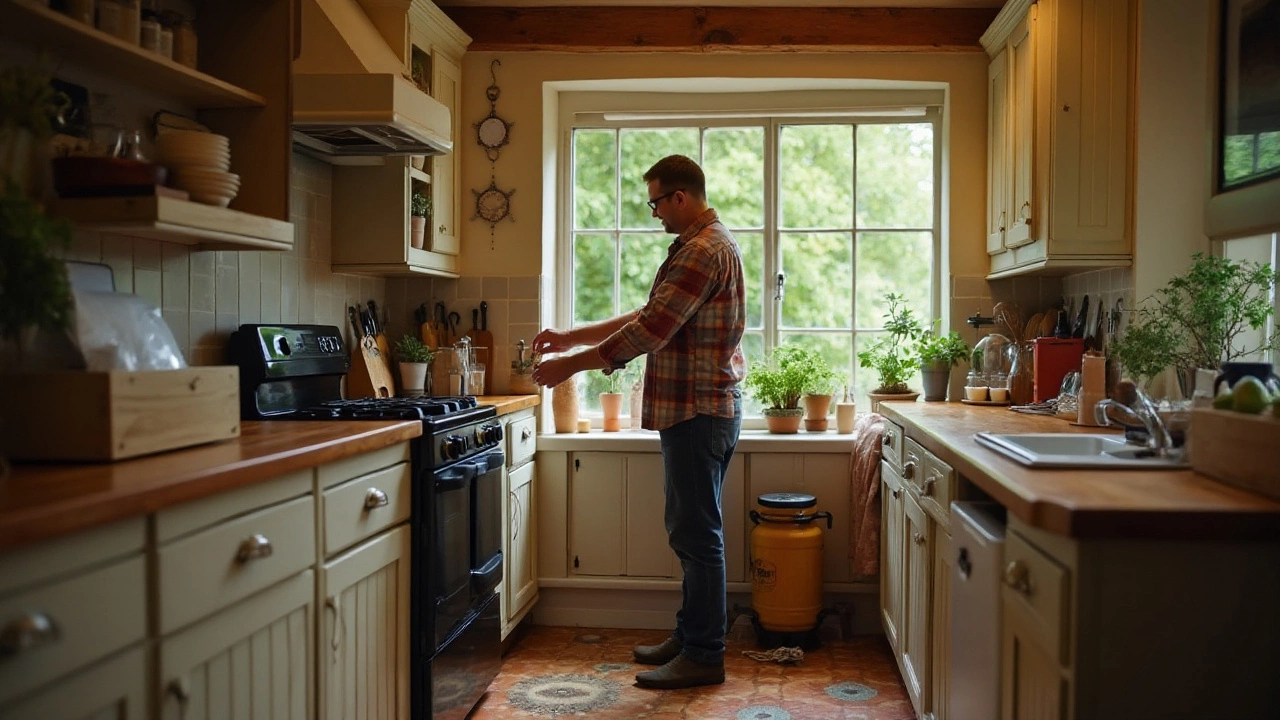
Maintenance and Usage Tips
When you bring a new electric oven into your kitchen space, it's much like welcoming a new member to the culinary family. But like any valuable addition, it requires a bit of love and care to keep it running smoothly for years to come. One of the first steps is understanding the ins and outs of maintaining your oven's efficiency and safety. A clean oven not only cooks more efficiently but also runs with less stress on its components, which can extend its lifespan. To start with, regularly checking and cleaning the oven's interior and exterior should be on your maintenance checklist. Every few months, depending on use, a thorough clean is recommended to remove grease and food particles that may have been left behind from your culinary adventures.
Another important aspect of maintaining your electric oven is the regular inspection of the oven door seals. These seals ensure that the heat remains inside, providing efficient cooking and preventing energy wastage. A damaged or weak seal could mean that your oven is working harder to maintain temperature, driving up your energy costs and possibly leading to uneven cooking. It’s wise to periodically check these seals for any signs of wear or damage and replace them promptly if necessary. Regular use of your oven may lead to the accumulation of dust or debris in the vents and fan, affecting the performance. Keeping these areas clean will not only ensure efficient operation but will also reduce the risk of overheating or malfunction.
For those with a knack for DIY, changing your oven bulb might seem like a simple task, but it requires a bit of attention to avoid disrupting the more delicate parts of the unit. Make sure to use the manufacturer's recommended bulb type, and always ensure the oven is turned off and cooled down before attempting any replacements. “Electric ovens are remarkable for their energy efficiency and cooking precision, but this precision can only be maintained through vigilant upkeep,” advises home appliance expert Jessie Lee.
“Regular maintenance not only saves money in the long run but significantly enhances the user experience,” suggests the Home Appliance Review magazine. This sentiment is echoed by many experts who emphasize the value of seeing maintenance as a part of the appliance's life cycle, rather than an occasional chore.
In terms of usability, understanding how to maximize your electric oven’s features can bring the best results from your favorite recipes. Modern electric ovens come with a variety of functions and modes—convection, grilling, and heat settings, to name a few—each designed to cook foods in specific ways. Familiarizing yourself with these modes can enhance your cooking results. For instance, using the convection setting for baked goods can provide more even cooking, while grilling functions can give meals that professional sear.
Ovens are not one-size-fits-all, and what works for a roast chicken might not suit a delicate soufflé. Taking time to experiment with these settings can serve you in good stead, expanding your culinary repertoire and making full use of your kitchen upgrade. With the right care and an adventurous spirit, an electric oven offers endless possibilities, making it a vital hub in the home for both daily meals and grand feasts alike.

